Introduction
Financial analysis is a crucial practice for organizations looking to ensure their fiscal health and guide decision-making processes. By delving into financial statements, analysts can decipher profitability, liquidity, and solvency, providing vital insights into an enterprise's vitality. But financial analysis is not just about examining past figures; it is a forward-looking approach that enables businesses to forecast future performance and adapt with agility.
This comprehensive suite of tools allows companies to gain actionable insights, make informed decisions, and overcome complexity within tight deadlines. Financial analysts play a crucial role in interpreting complex data and market trends, providing businesses with the necessary insights to navigate financial challenges and seize investment opportunities. The importance of financial analysis is further underscored by the transformative power of business data analytics.
As companies strive to become data-driven, the role of financial analysis in shaping industry practices and guiding strategic planning becomes increasingly significant. With their expertise in financial modeling and interpretation, financial analysts are essential for continuous refinement and adaptation to changing business conditions.
Why Conduct Financial Analysis
Financial analysis stands as a pivotal element for organizations seeking to ensure their fiscal health and guide decision-making processes. Delving into financial statements, analysts can decipher profitability, liquidity, and solvency, which are vital signs of an enterprise's vitality. The practice of financial analysis is not merely about examining past figures; it is a dynamic, forward-looking approach that enables businesses to forecast future performance and adapt to changes with agility.
For instance, consider the case of a hotel chain that aimed to increase bookings through Google Ads but failed to set a solid foundation for their advertising strategy. By adopting a comprehensive suite of tools such as Google Analytics and Conversion Tracking, the hotel was able to gain actionable insights, leading to more effective campaigns and increased bookings.
Moreover, financial analysis is key in harnessing data from various sources to make informed decisions, as demonstrated by Virgin Money's M-Track solution. By integrating with a multitude of business systems, this tool provides a consolidated view of data, enabling deeper insights and smarter decision-making. Virgin Money's collaboration with FinTech experts allowed them to overcome the complexity of achieving such integration within tight deadlines.
Financial analysts play a crucial role in interpreting complex data and market trends, providing businesses with the insights necessary to navigate financial challenges and seize investment opportunities. Their expertise in financial modeling, such as the Three Statement Model or the Discounted Cash Flow Model, is essential for continuous refinement and adaptation to changing business conditions.
The importance of financial analysis is further underscored by the Global State of Business Analysis Report, which highlights trends and challenges in the business analysis landscape, emphasizing the transformative power of business data analytics. As companies strive to become data-driven, the role of financial analysis in shaping industry practices and guiding strategic planning becomes increasingly significant.
Key Components of Financial Analysis
A financial analyst's role is pivotal for the financial well-being and strategic direction of a company. Their expertise lies in dissecting financial data, scrutinizing market trends, and weighing economic conditions to paint an accurate picture of a company's financial health. They deep-dive into financial statements such as balance sheets, income statements, and cash flow statements to gauge a company's profitability, liquidity, and solvency.
Financial statements are the backbone of financial analysis with mandatory reporting requirements. They form an integrated system where each statement contributes to a comprehensive understanding of financial performance. The income statement, or profit and loss statement, for instance, outlines a company's profitability over a certain period by detailing revenue from sales and subtracting expenses to determine net income—a critical indicator of financial health.
Forecasting future financial performance is another cornerstone of a financial analyst's responsibilities. By employing historical data, statistical tools, and sophisticated financial modeling, analysts can project future sales, revenue, expenses, and earnings. This forecasting is essential for formulating investment advice, as analysts must evaluate diverse investment opportunities to ascertain their potential returns and risk profiles, advising on whether to buy, hold, or sell assets.
The importance of financial analysis extends far beyond number crunching; it's instrumental in sculpting a business's trajectory. Financial forecasting enables accurate predictions of future revenues, expenses, and growth opportunities, allowing for more effective planning of budgets and investments. Analyzing financial statements reveals trends and potential risks, reinforcing sustainable financial practices crucial for strategic planning.
In the context of decision-making, financial analysts are the linchpins, supplying the data and insights that drive astute, strategic business choices. Data-driven decision-making is increasingly prevalent, as demonstrated by a recent S&P Global survey which found that nearly 25% of respondents indicated almost all their decisions are data-driven, with another 44% stating most are. This shift towards data-driven judgments helps organizations maintain a competitive edge by mitigating biased or subjective decisions.
However, the financial analytics market faces challenges, including data security concerns, especially with the growing reliance on cloud storage and processing, which elevates the risk of unauthorized access, data loss, and cyber attacks. Moreover, the industry is grappling with a shortage of skilled professionals. Surveys in 2022 highlighted a deficit of approximately 150,000 to 200,000 data science professionals, underscoring the need for individuals adept in logical thinking, statistical knowledge, and the ability to convert insights into tangible strategies.
Financial analysis is not only about adhering to audit and compliance regulations but also about making informed decisions that can profoundly impact a company's future. The insights provided by financial analysts enable leaders to understand where the company currently stands and the financial directions it could pursue, reinforcing the bedrock of informed strategic planning.
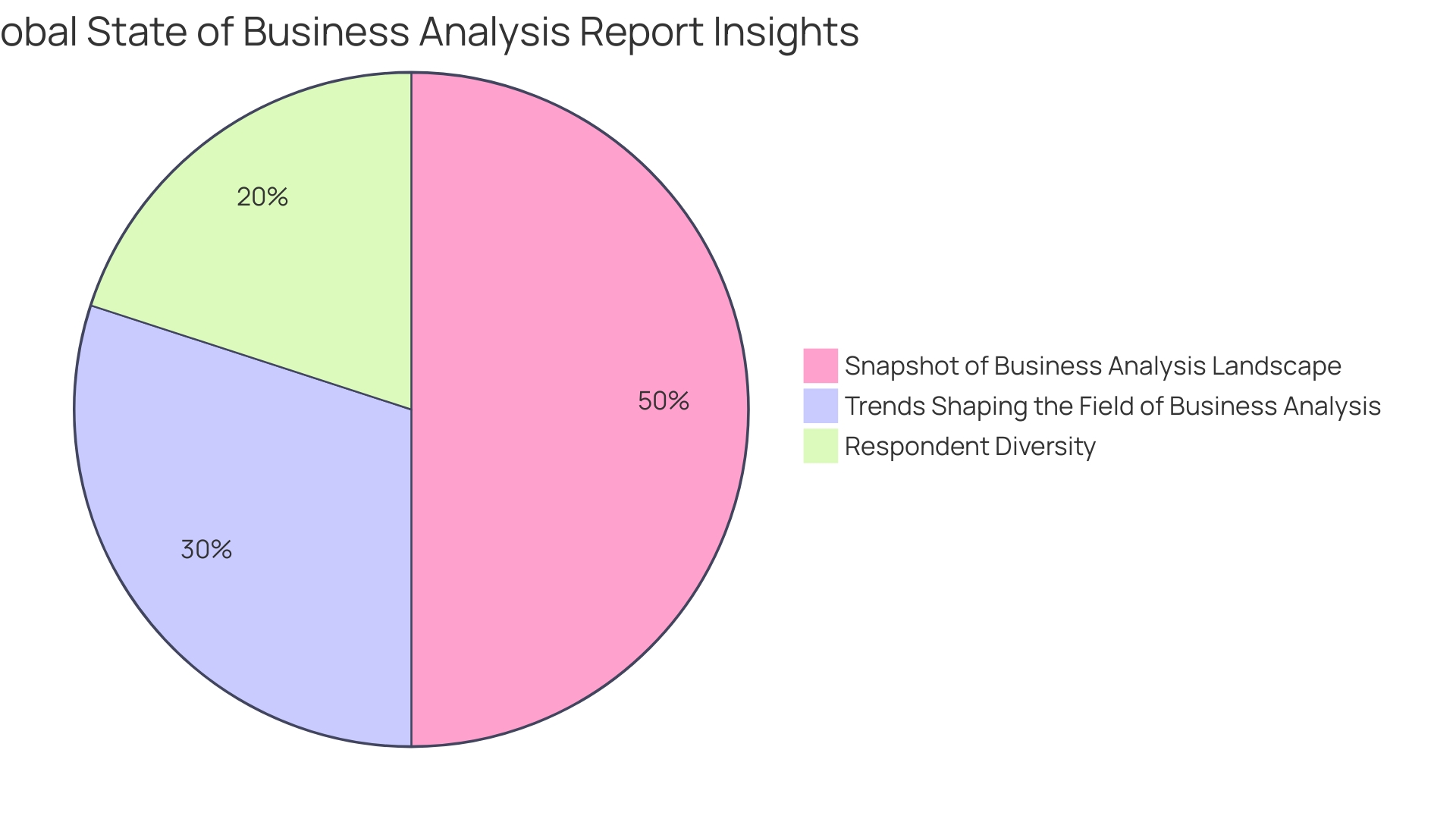
Gathering Financial Statements
Collecting and analyzing financial statements is a critical step for a thorough assessment of a company's fiscal health. The key components include the income statement, balance sheet, and cash flow statement. To streamline this process, consider condensing extensive reports, such as the 10-K, into a more manageable format by retaining only the most insightful data, which typically results in a distilled document of 20-30 pages from the original 100-200 pages.
Approaching these financial statements with a focused strategy is beneficial; for example, MasterCard allocates approximately 75% of their analysis time to the Business Risk Factors section of their 10-K.
The cash flow statement, for instance, is indispensable as it traces all cash transactions, from operational earnings to investment influxes. This statement is pivotal in understanding whether a company's cash generation is sufficient or if it is heavily dependent on external funding sources. It also sheds light on cash management, which is essential for assessing financial robustness and efficiency.
Furthermore, the statement of changes in equity, or the statement of retained earnings, provides a deep dive into the changes in a company's equity, offering insights into decisions affecting shareholder value, incorporating aspects such as net income and dividend distributions.
Recent developments from the International Accounting Standards Board (IASB) underscore the importance of uniformity in financial reporting. An IASB study revealed that among 100 companies, over 60 reported their operating profit using various methodologies. This highlights the significance of adhering to consistent standards, such as the International Financial Reporting Standards (IFRS) and Generally Accepted Accounting Principles (GAAP), to ensure the accuracy and comparability of financial statements.
To effectively convey the complexities of financial data, it is crucial to understand the interconnectivity of the three core financial statements. Luca Pacioli's 15th-century double-entry accounting system, which serves as the foundation of modern accounting, emphasizes the balance sheet equation: Assets = Equity + Liabilities. Changes in one part of the equation invariably affect the other, offering valuable clues about a company's financial activities.
Lastly, Omar Choucair of Trintech highlights the importance of fundamental financial reporting: ensuring that financial statements are accurate begins with maintaining clean books that reflect up-to-date costs. Utilizing appropriate accounting software and educating management on the interpretation of monthly reports are essential steps towards producing reliable financial statements.
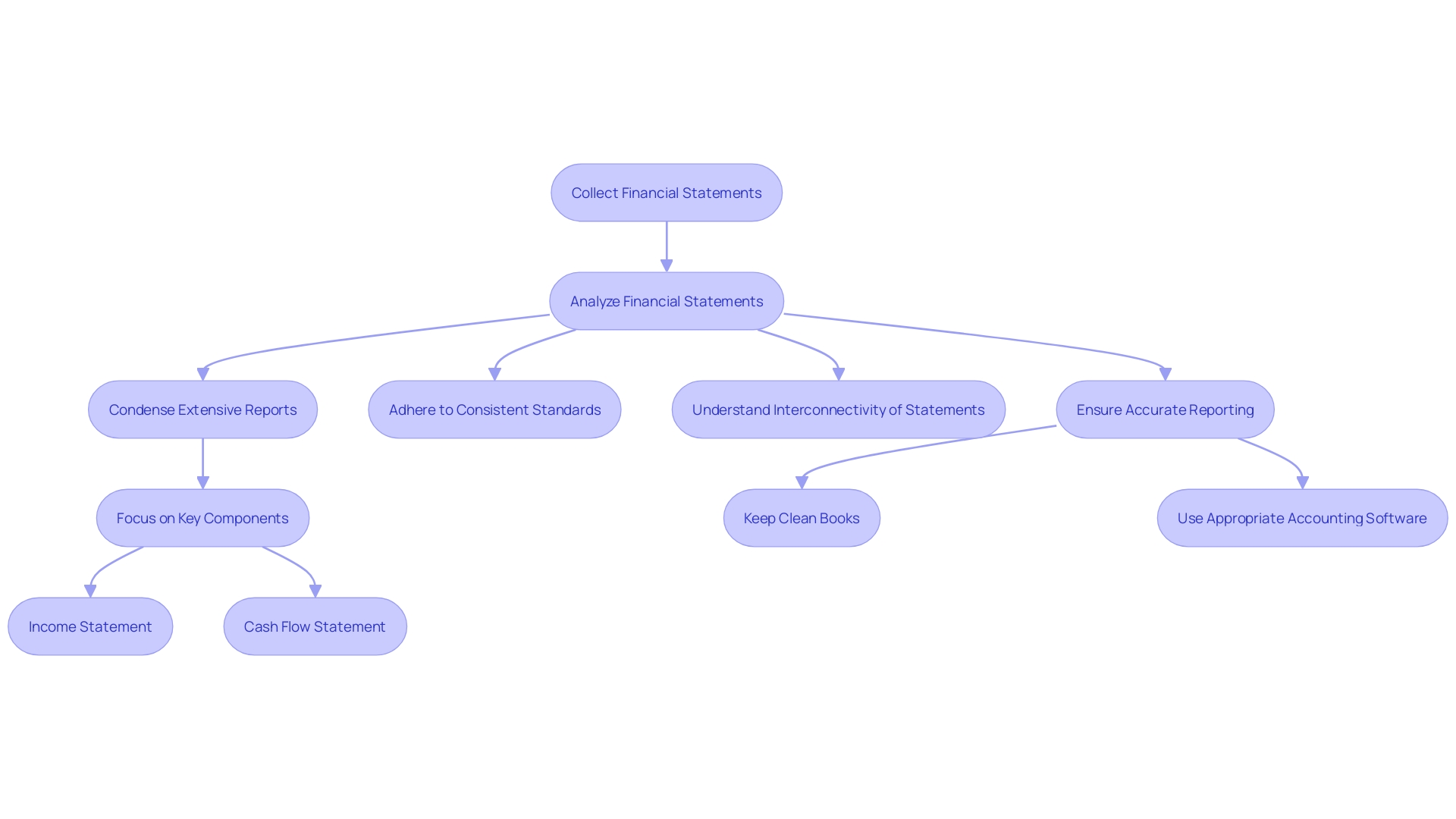
Analyzing Financial Statements
Delving into financial statements is akin to embarking on a treasure hunt where the maps are the income statement, balance sheet, and cash flow statement. To unearth valuable insights, you must adopt a forensic mindset, much like the double-entry accounting system pioneered by Luca Pacioli, which revolutionized modern commerce and can uncover financial discrepancies akin to solving a mystery.
The accounting equation, Assets = Equity + Liabilities, serves as a foundation, highlighting that any alteration in assets must be mirrored by a change in either equity or liabilities. This correlation offers vital clues to the company's financial movements. For instance, a shift in balance sheet items could indicate strategic decisions affecting the company's financial structure or reveal operational adjustments.
A cash flow statement, a crucial component of financial reports, chronicles the cash inflows and outflows within a business. It presents a clear picture of whether a company's operations are cash-generative or if it's dependent on external financing. This insight is critical for understanding how a company stewards its cash, which directly speaks to its financial robustness and operational prowess.
Moreover, the statement of change in equity, or the statement of retained earnings, delves into the changes in a company's equity over time. It reflects financial decisions impacting shareholder value, including net income variations and the dividend distribution strategy.
Dividend potential, a key consideration for income investors, is gauged through financial statement analysis. It provides a window into a company's profit-making capacity and its capability to maintain a consistent dividend payout. This analysis can be intricate, involving a comparison of current financial performance against historical data and industry standards, while also considering less quantifiable factors like the quality of management and competitive positioning.
With the expansion of a company's stakeholder base, the volume of information similarly increases. Financial statements emerge as a streamlined tool to convey this wealth of data. The challenge lies in sifting through this extensive financial information to identify, organize, and interpret the essential data, thereby revealing any irregularities or concealed insights.
In today's information-rich landscape, the potential for data mining is immense, emerging as a crucial tool for extracting hidden yet valuable knowledge from vast and complex datasets. This practice intersects various domains, including machine learning, statistics, and artificial intelligence, and aims to unveil meaningful information that's actionable and applicable within certain constraints.
By applying these analytical techniques, CFOs can lead their organizations with greater precision, ensuring that every financial decision is informed by a deep understanding of the subtleties embedded within their financial statements.
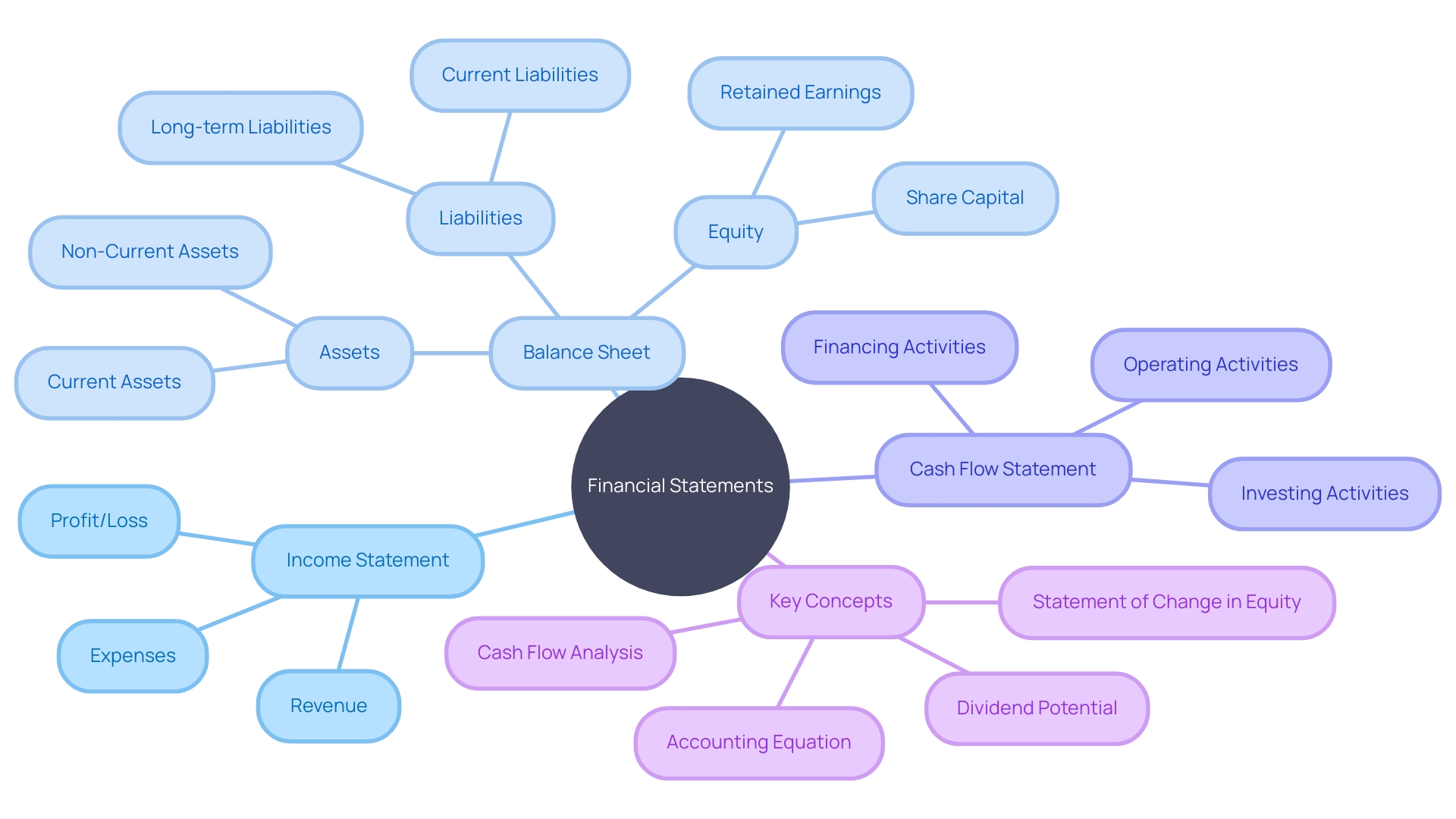
Income Statement Analysis
Delving into the intricacies of an income statement unveils the true profitability landscape of a company. This financial document, often synonymous with a Profit & Loss (P&L) statement, serves as a beacon for understanding financial performance across different timeframes. It presents a consolidated view of revenue, expenses, and net profit, enabling a strategic approach to enhance operational efficiency.
By dissecting the income statement, we unlock a wealth of information beyond the superficial top-line revenue figures. It's the comprehensive bottom-line insights that reveal the impact of costs and expenses on a hotel's profitability or any other business sector. Operating expenses, although not directly tied to the creation of goods or services, are significant indicators of the company's operational health and must be scrutinized carefully.
The importance of an accurate and thorough income statement analysis cannot be overstated. With over 60% of businesses reporting operating profit in diverse manners, as highlighted by an IASB study, it becomes clear that a standardized approach to financial reporting is essential for comparability and informed decision-making. The income statement, alongside other primary financial statements, constructs a financial narrative that guides investment choices, financing strategies, and shareholder returns.
Indeed, the goal is not solely profit maximization but rather value maximization, which dictates the trajectory of business strategies. This paradigm shift is crucial for companies, particularly those in growth phases, where immediate profitability may be sacrificed for long-term value creation. As such, an insightful analysis of the income statement is fundamental for stakeholders to evaluate dividend potential and prospects for sustainable income generation.
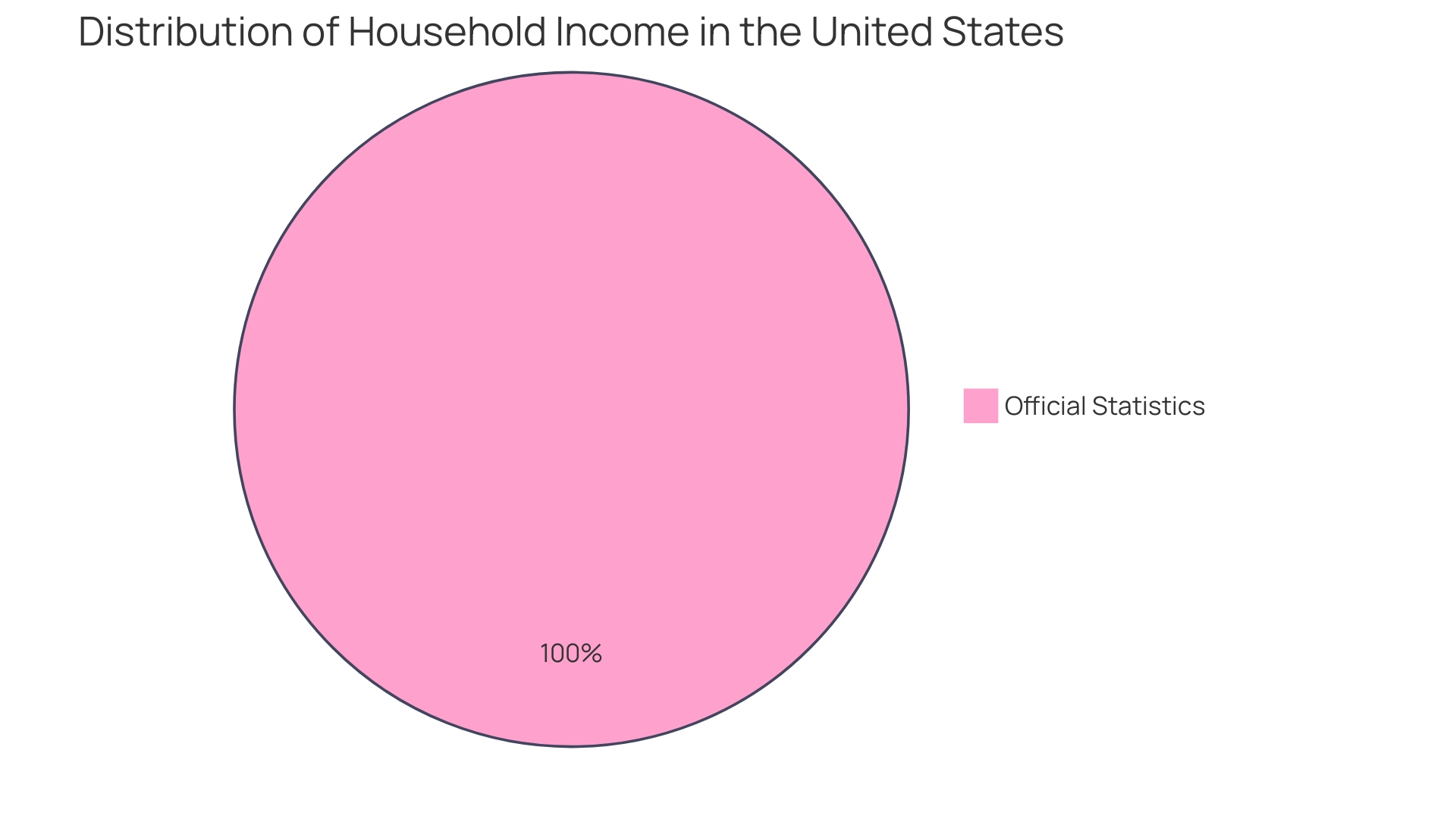
Balance Sheet Analysis
The health of a company's financial standing can be measured effectively through a balance sheet, which offers a snapshot of its financial position at a given moment. By examining critical ratios and metrics, one can assess liquidity, solvency, and overall financial health. Notably, changes in balance sheet items are particularly telling, as indicated by the fundamental accounting equation: Assets = Equity + Liabilities.
This dynamic reflects that adjustments to assets necessitate corresponding changes on the liabilities side, and vice versa.
Understanding these financial nuances is not just academic; it's a practical necessity. As recent events have shown, recognizing overvalued equity and other financial anomalies can be the difference between weathering a storm and succumbing to it. The collapse of institutions such as Silicon Valley Bank (SVB) and Signature Bank underscore this point, highlighting the importance of vigilance against seemingly innocuous risks that, upon closer examination, reveal significant vulnerabilities.
In analyzing balance sheets, the interconnectivity of financial statements becomes apparent. The income statement, balance sheet, and cash flow statement are intertwined, each feeding into and informing the others. As such, a deep dive into balance sheet analysis can unearth insights about a company's operational efficiency and its capacity to meet short-term obligations and maintain long-term financial health.
Moreover, the distinction between banks and nonbank financial institutions is critical to grasp, as the latter can encompass entities like open-ended mutual funds, money market funds, and hedge funds, all of which carry potential financial stability risks. As the financial landscape evolves, with new players such as FinTech firms and securitization vehicles emerging, understanding these distinctions and the inherent risks becomes increasingly important.
Ultimately, the core business model of banks, which revolves around the management of assets and liabilities, forms the bedrock of capital market activities. By delving into the nuances of balance sheet analysis, one can not only decode the current financial health of an institution but also develop the foresight to anticipate and mitigate the impact of future financial disturbances.

Cash Flow Statement Analysis
Analyzing a company's cash flow statement provides insight into its cash management and financial flexibility. It's a crucial part of financial analysis, detailing the inflows and outflows from operating activities, investments, and financing. The statement is divided into clear sections, each offering a different perspective on the company's liquidity and long-term stability.
Operating activities are of particular interest as they show the cash generated or used by the company's core business operations. This includes revenue from sales, operational expenses, and adjustments for non-cash items like depreciation, as well as changes in working capital accounts such as receivables and payables.
Investments in assets or businesses and the resulting cash flows are listed under investing activities. Financing activities, on the other hand, reveal cash movements from loans, repayments, and equity transactions, crucial for understanding dividend potential and shareholder value.
Companies like Monday.com stand out for their efficient growth and swift attainment of free cash flow positivity, showcasing the importance of gross margins in revenue valuation. Their approach highlights the need for efficient growth strategies to enhance cash investment, extend cash runway, and boost shareholder value.
The imperative to master cash flow management is underscored by the harsh reality that poor cash flow can lead to business failure. A robust strategy is essential to navigate the ebbs and flows of business cash and maintain a healthy balance.
Recent news also underscores the importance of cash flow management, such as the increase in the National Living Wage, which impacts operational costs and cash flow. Keeping abreast of such developments is vital for strategic planning.
Auditors and investors place significant emphasis on the quality of cash flow statements. The preparation and presentation of these statements should be conducted with due diligence, as they are a leading area for financial restatements and play a critical role in assessing an entity's financial health and prospects.
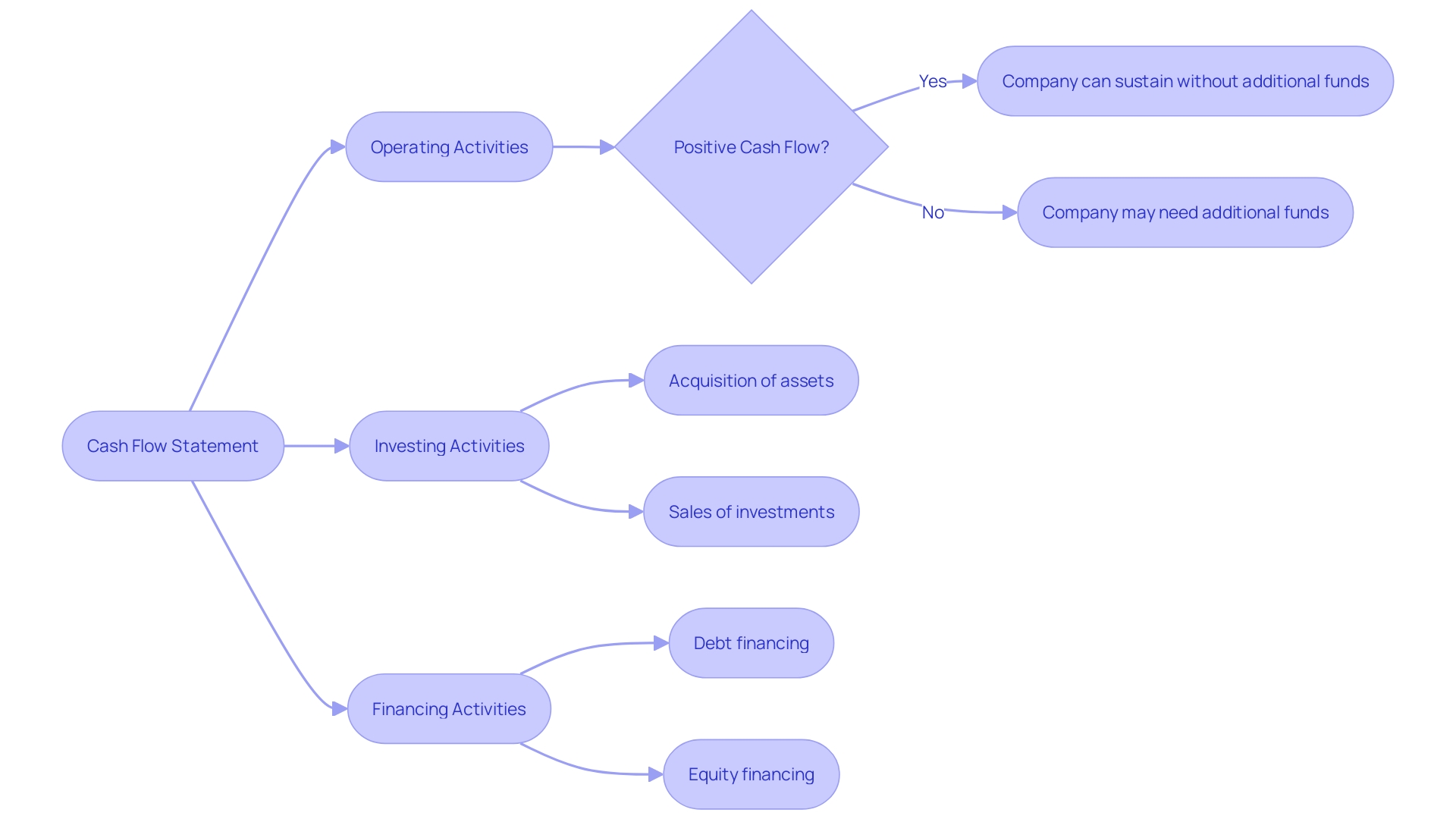
Calculating Financial Ratios
Financial ratios are critical tools for evaluating a company's operational efficiency and financial sustainability. By calculating and analyzing liquidity, profitability, and solvency ratios, businesses can gain insights that help in strategic decision-making and financial planning.
Liquidity ratios, such as the current ratio and quick ratio, assess a company's ability to meet its short-term obligations. These ratios are particularly important in maintaining adequate cash flow and ensuring operational fluidity, which are essential for managing day-to-day financial responsibilities.
Profitability ratios, including the gross margin ratio and return on assets, provide a window into a company's ability to generate income relative to its revenue, assets, or equity. Companies like Monday.com have demonstrated the significance of gross margins and efficient growth in becoming free cash flow positive—a testament to the potential of high profitability to drive investor value and provide resources for reinvestment.
Solvency ratios, such as the debt-to-equity ratio, measure the long-term financial stability of a business and its capacity to sustain operations over time. For example, in industries like manufactured housing, where market growth is evident, it's crucial to compare debt levels across companies to understand their long-term viability and investment potential.
By employing these financial ratios effectively, businesses can not only reflect on past performance but also develop forward-looking strategies that support sustained growth and value creation for shareholders.
Common Financial Ratios
Financial ratios serve as a compass in the realm of fiscal analysis, guiding stakeholders through the labyrinth of numbers to unravel the true financial health of a company. These ratios, distilled from income statements and balance sheets, are transmuted into percentages, offering a standardized metric for comparison across various industries. By transforming complex financial data into digestible ratios, they lay bare the financial fortitude and operational efficiency of businesses.
For instance, the operating cash flow ratio is a testament to a company's prowess in generating cash through its core business activities, reflecting its capability to sustain operations independently of external funding sources. This ratio scrutinizes the cash inflows from customers against outflows for goods production, supplier payments, and other operational expenses. A robust operating cash flow indicates a firm's adeptness at cash generation, which is a cornerstone of financial resilience.
Moreover, these ratios are not merely diagnostic tools but also strategic aids that assist in benchmarking a business against its peers and industry standards. They pinpoint potential red flags and inform credit assessments, risk evaluations, and strategic decision-making processes. Dividend potential, an indicator of a company's profit distribution capabilities, is scrutinized by investors to forecast future income streams.
It integrates an analysis of the company's current financial performance with past trends and industry benchmarks while considering qualitative aspects such as management acumen and competitive positioning. In essence, financial ratios exemplify the principle of value maximization, steering businesses towards growth and profitability, and ensuring they keep pace with or outstrip their industry contemporaries.
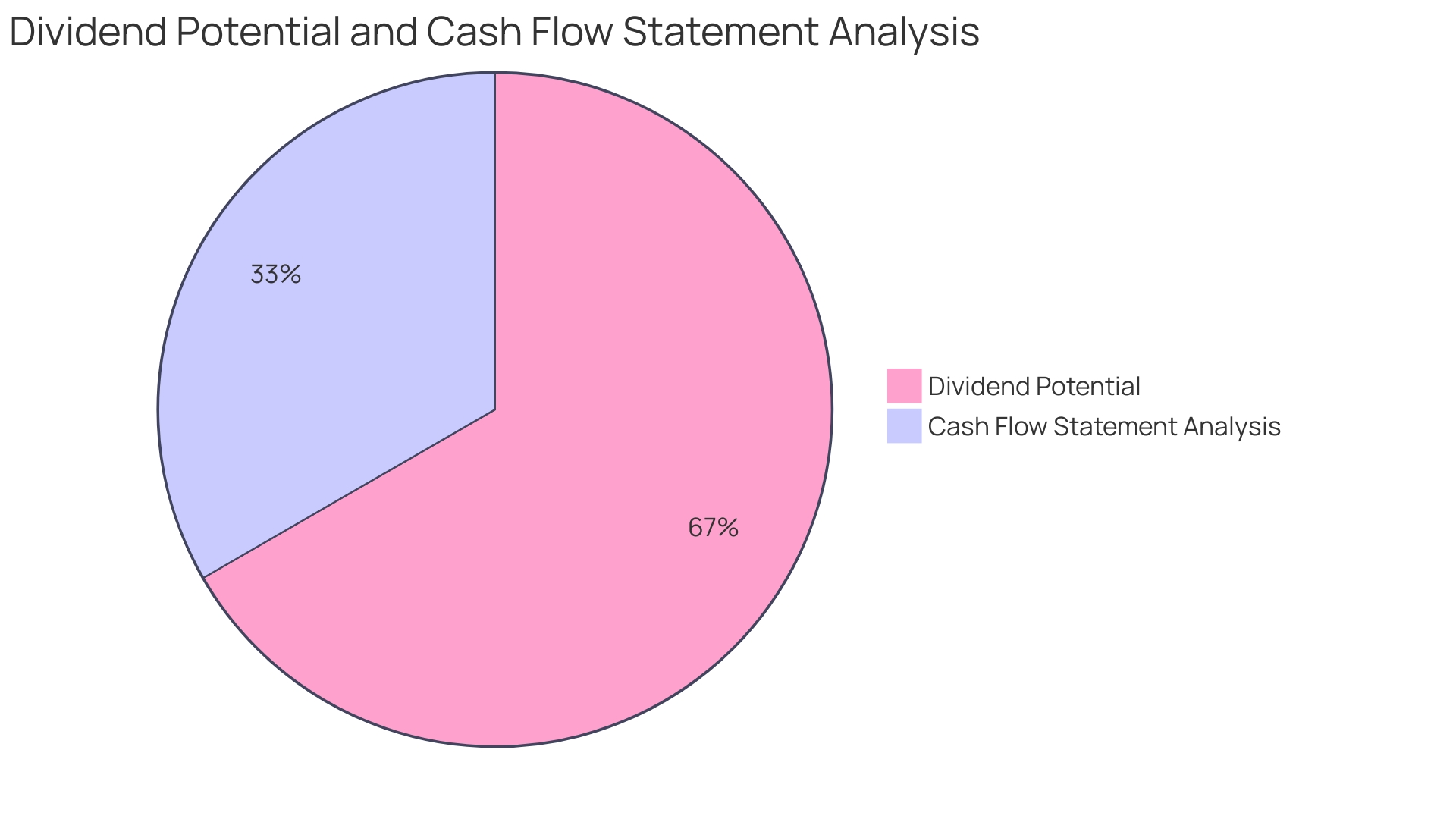
Interpreting Financial Analysis Results
Interpreting the results of a financial analysis involves more than just reviewing numbers and ratios; it requires a deep understanding of the underlying data and its implications for your business. To accurately draw conclusions from your financial analysis, start by defining a clear objective. What are you trying to understand or improve?
Is it customer behavior, financial performance, or operational efficiency? Once your goal is clear, examine the data to identify trends, patterns, and relationships that can guide your decision-making.
For example, consider the approach taken by Variant Perception's Head of Research, who used binary signals to uncover turning points in asset classes or economic data series. This method involves creating a binary indicator that flags when a specific data threshold is breached and analyzing the subsequent effects on related datasets. Similarly, when examining an options-based market, it's essential to delve into the project structure to understand the originality of the code and the topmost functions users engage with.
Financial Engineer Alan Galecki's method of focusing on unloved and overlooked sectors with healthy risk-reward ratios exemplifies the importance of informed investment decisions. By avoiding the hype and understanding what you own, you can sidestep common pitfalls that retail investors face. This approach is supported by a study which found that predictions have a short shelf life, and beyond a three-day forecast, accuracy drops significantly.
In summary, interpreting financial analysis results effectively means going beyond surface-level data to understand the bigger picture, employing proven analytical methods, and making decisions grounded in thorough research and sound risk analysis.
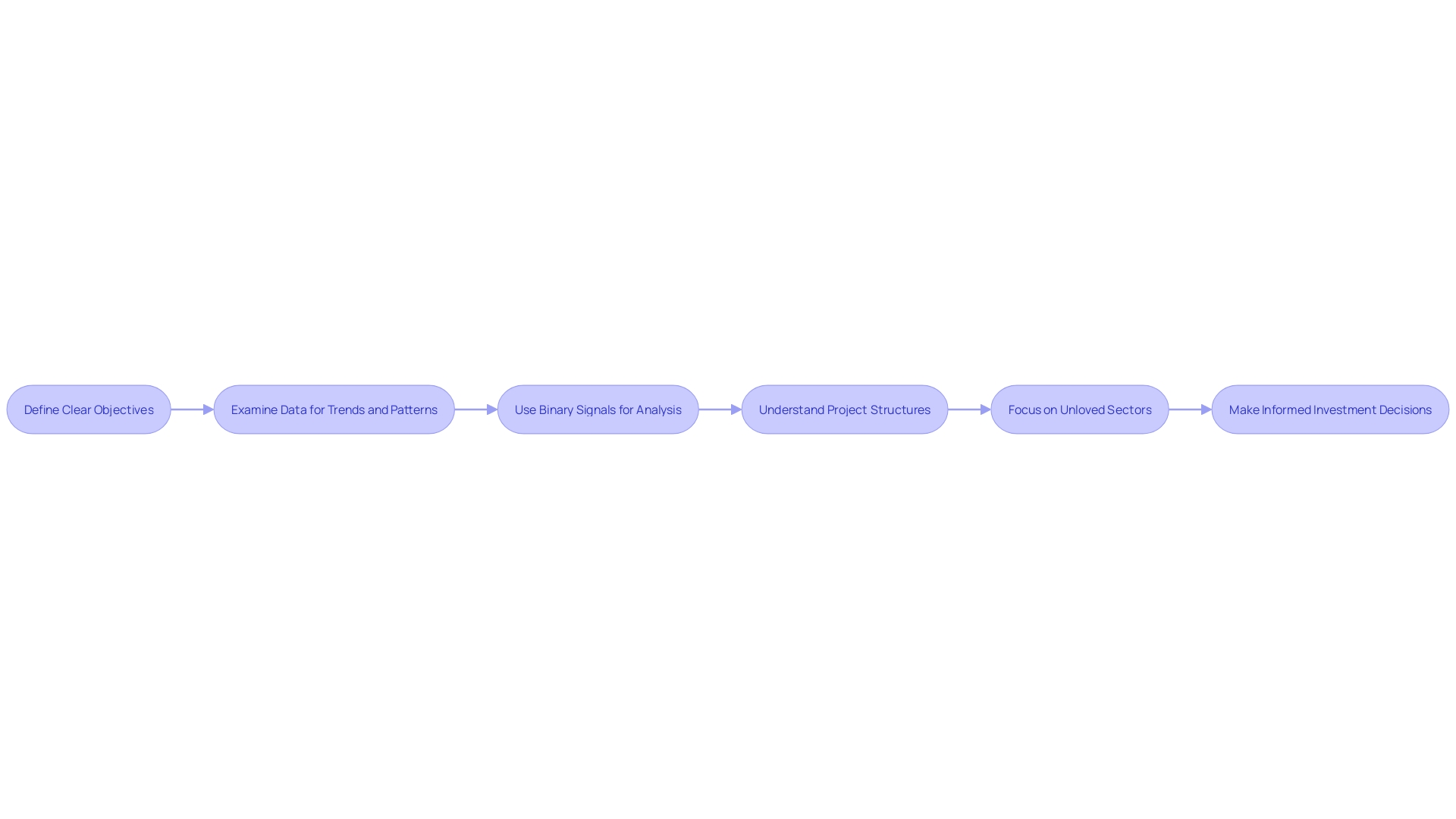
Identifying Financial Strengths and Weaknesses
Financial analysis serves as the compass guiding companies through the economic landscape, pinpointing financial strengths and charting a course around weaknesses. A financial analyst is akin to a navigator, dissecting financial data, and leveraging market trends to steer businesses clear of fiscal storms and towards prosperous waters.
Data analysis is their sextant, as they meticulously analyze financial statements, scrutinizing balance sheets, income statements, and cash flow statements to gauge profitability, liquidity, and solvency. The precision of their analysis can illuminate the financial health of a company, highlighting areas ripe for investment or signaling the need for strategic adjustments.
Forecasting is yet another critical tool in the financial analyst's arsenal. By harnessing historical data, statistical tools, and financial modeling, they cast predictions about future financial performance, akin to a meteorologist forecasting weather patterns. These forecasts encompass sales, revenue, expenses, and earnings, providing a glimpse into the company's fiscal future.
Moreover, the sage advice of financial analysts on investment decisions can shape the financial terrain of a company. With a keen eye for potential returns and risks, they assess various investment opportunities, from stocks and bonds to other securities, advising on the most advantageous maneuvers - whether to buy, hold, or sell.
As economic currents shift, companies must adapt, recalibrating their strategies to harness the winds of change. The insights gleaned from financial analysis are invaluable in this regard, arming businesses with the knowledge to navigate the ever-evolving market context influenced by socio-cultural, economic, and technological factors.
In essence, the role of a financial analyst is indispensable for a company's journey towards sustained success. Their expertise not only identifies the financial strengths and vulnerabilities but also charts a strategic path through the market's complex terrain, ensuring the company's ability to thrive amidst the dynamic waves of the financial sea.
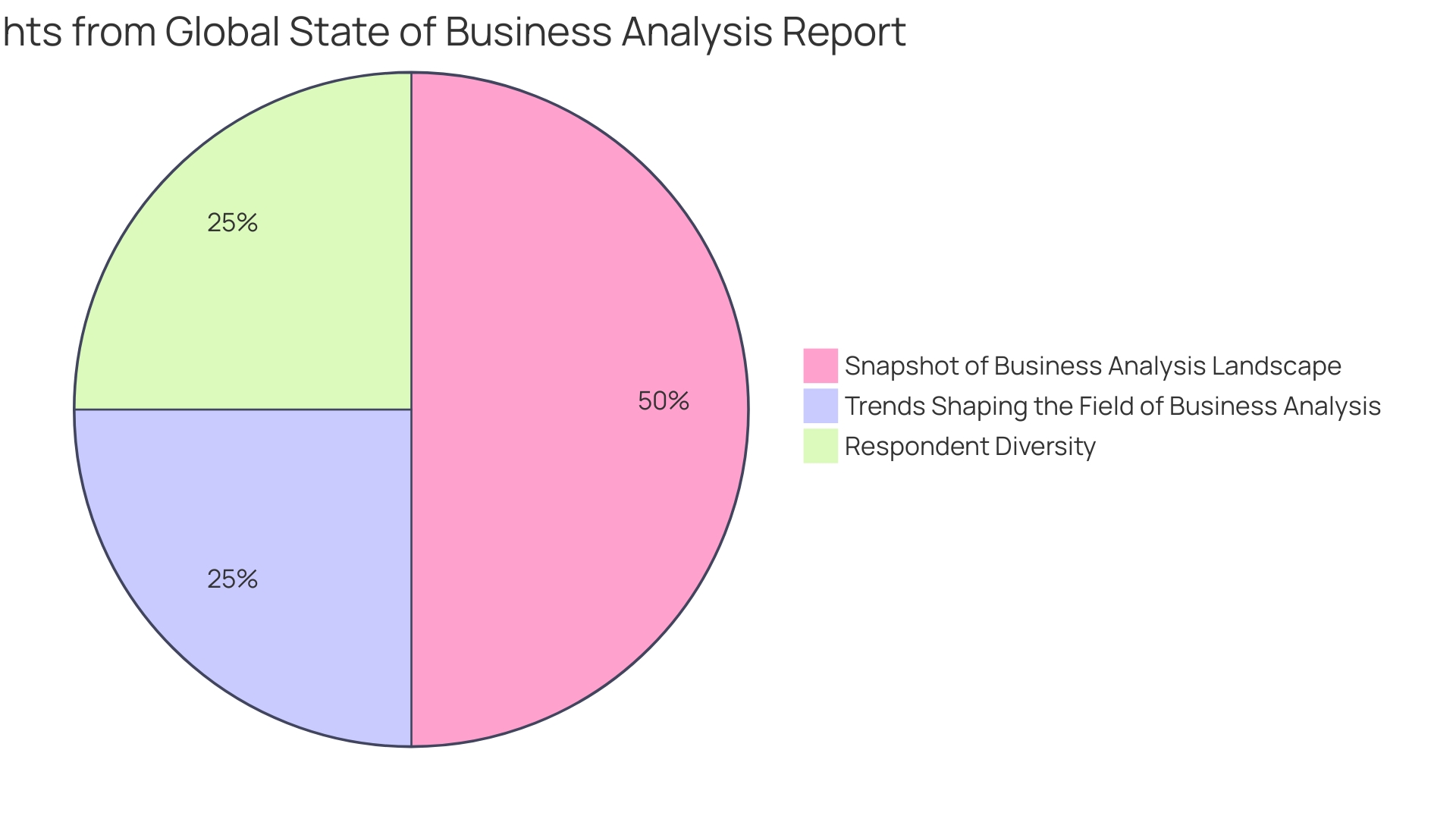
Using Financial Analysis for Strategic Decisions
At the heart of effective strategic decision-making lies the rigorous practice of financial analysis. By employing a keen understanding of market dynamics, including socio-cultural, economic, and technological factors, businesses can craft strategies that capitalize on these changes. Financial analysts play an indispensable role in this process, delving into financial statements and market trends to deliver insights that drive profitability and growth.
Through data analysis and forecasting, they provide a roadmap for navigating financial challenges and seizing investment opportunities.
Understanding customer experience, for instance, is pivotal in shaping strategic initiatives. As customers interact with products and services, their impressions can significantly influence a company's growth path. By analyzing customer engagement data, businesses can refine their approach to sales and marketing, enhancing the overall customer journey.
Investment strategies, too, must be informed by robust financial analysis. Whether it's the steady approach of dollar-cost averaging or the more assertive lump sum investing, knowing the market and understanding risk tolerance are critical. Smart analytics have revolutionized the investment landscape, providing investors with the insights required to make more informed decisions.
A financial analyst's role extends beyond traditional data scrutiny. The current financial environment demands an orientation that considers competitors, customer preferences, and the broader economic canvas. This comprehensive approach to financial analysis not only informs strategic business decisions but also ensures that a company remains agile and competitive in an evolving marketplace.

Best Practices for Conducting Financial Analysis
To bolster the precision and impact of financial analysis, embracing best practices is pivotal. A financial analyst's role is to scrutinize financial data, market trends, and economic conditions to ensure a company's fiscal well-being. By analyzing balance sheets, income statements, and cash flow statements, analysts assess aspects such as profitability, liquidity, and solvency.
Effective financial analysis is not merely about crunching numbers; it shapes the destiny of a business by forecasting future revenues, expenses, and uncovering growth opportunities, enabling informed budget and investment planning.
A thorough financial analysis begins by defining clear objectives and collecting pertinent data. Whether the goal is to understand customer behavior, evaluate financial performance, or pinpoint operational inefficiencies, a clear objective steers the gathering of relevant data. In today's data-driven landscape, tools that automate financial data collection, such as integrated accounting software, are invaluable.
To navigate the multifaceted world of finance, a structured analytical report is your compass. Such reports dissect issues, scenarios, or data sets to reveal trends, patterns, and relationships. Whether it's financial performance, customer behavior, market trends, or operational efficiency, analytical reports empower decision-makers with evidence-based insights, steering clear of reliance on mere intuition.
Financial analysts are pivotal in the decision-making matrix, providing data and insights that culminate in strategic business choices. Their expertise in forecasting, analysis, and investment advice is indispensable. As per the Global State of Business Analysis Report, which surveyed over 4,400 professionals from 165 countries, understanding industry trends and the current state of business analysis is crucial for navigating today's challenges.
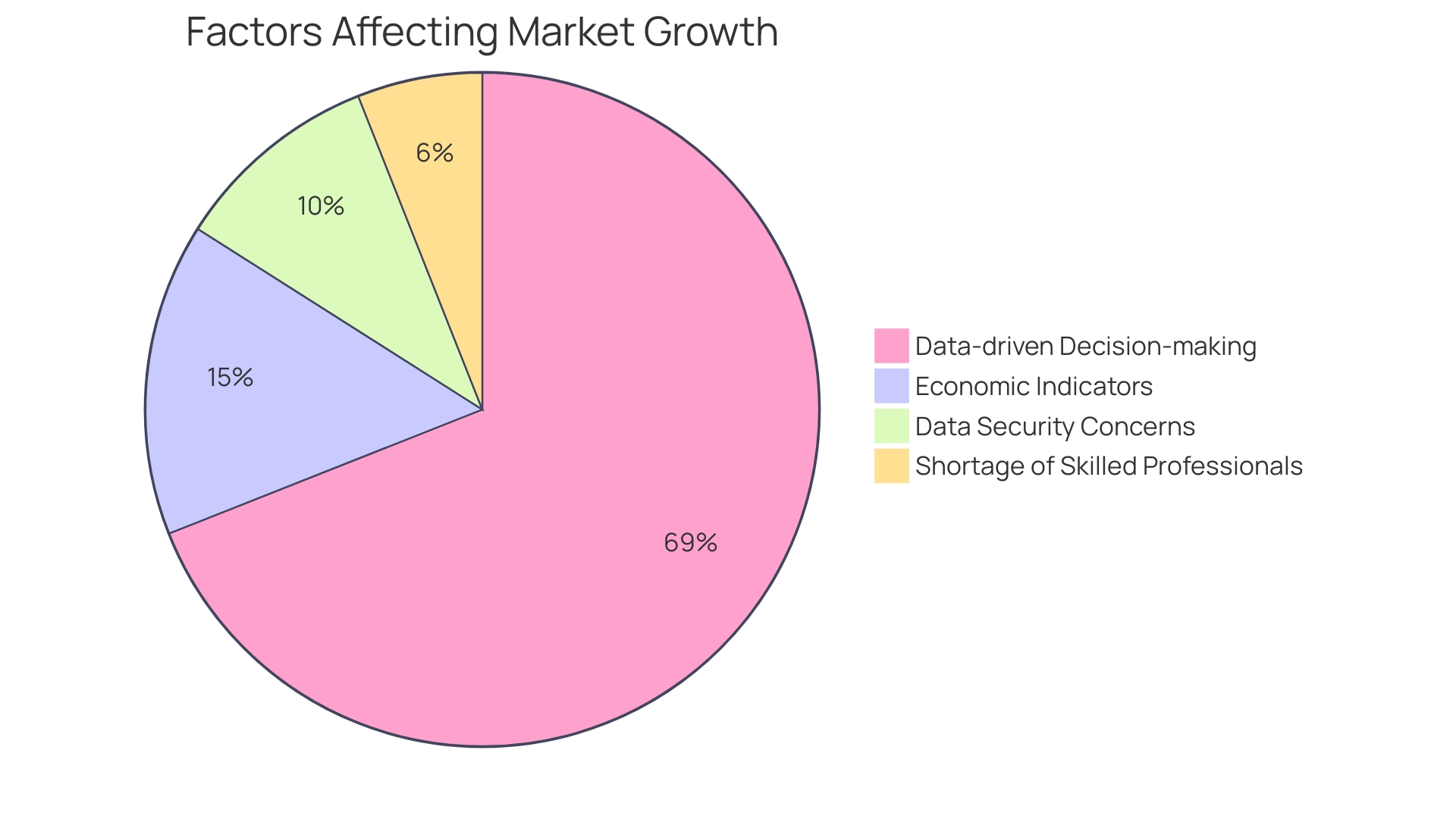
Tools and Resources for Financial Analysis
As organizations increasingly prioritize data-driven decision-making to maintain a competitive edge, the reliance on advanced financial analysis tools has surged. These sophisticated tools are essential for distilling financial metrics and trends, allowing decision-makers to eschew biased judgments in favor of evidence-based strategies. A 2022 S&P Global survey highlighted this shift, revealing that 25% of respondents rely almost entirely on data for their decisions, while 44% stated that data predominantly guides their choices.
However, challenges such as data security concerns and a shortage of skilled professionals pose significant hurdles. The push towards cloud-based data storage and processing amplifies risks like unauthorized access, data loss, and cyber-attacks. The industry grapples with a notable gap in data science expertise, with a deficit of approximately 150,000 to 200,000 professionals reported in 2022.
This shortage underscores the need for proficiency in logical thinking, statistical knowledge, and the ability to translate insights into actionable strategies.
Moreover, regulatory compliance remains a vital aspect of financial operations, necessitating adherence to audit and compliance regulations. In light of these considerations, financial analysts are instrumental in ensuring that businesses not only comprehend their financial standing but also make informed forecasts and strategic decisions. They delve into financial statements and market trends, equipping companies with the insights needed to navigate financial challenges and seize investment opportunities.
Embracing financial analytics tools is not merely about possessing data but transforming it into actionable financial insights. As the landscape evolves, those adept at leveraging data analytics will find themselves well-positioned to thrive in a complex, data-centric world.

Conclusion
Financial analysis is a crucial practice that enables organizations to ensure their fiscal health and make informed decisions. By delving into financial statements, analysts decipher profitability, liquidity, and solvency, providing vital insights into a company's vitality. It is a forward-looking approach that allows businesses to forecast future performance and adapt with agility.
Financial analysts play a crucial role in interpreting complex data and market trends, offering the necessary insights to navigate financial challenges and seize investment opportunities. Their expertise in financial modeling and interpretation is essential for continuous refinement and adaptation to changing business conditions.
The importance of financial analysis is further highlighted by the transformative power of business data analytics. As companies strive to become data-driven, financial analysis becomes increasingly significant in shaping industry practices and guiding strategic planning.
To effectively conduct financial analysis, organizations should follow best practices, including defining clear objectives and collecting relevant data. Utilizing structured analytical reports and leveraging advanced tools and resources are also essential. It is crucial to address challenges such as data security concerns and the shortage of skilled professionals in the industry.
In conclusion, financial analysis is a critical practice that empowers organizations to gain actionable insights and navigate financial challenges. Financial analysts play a pivotal role in interpreting complex data, providing businesses with the necessary insights to thrive in a data-driven world. By following best practices and utilizing advanced tools, organizations can leverage the power of financial analysis to make informed decisions and ensure long-term success.




